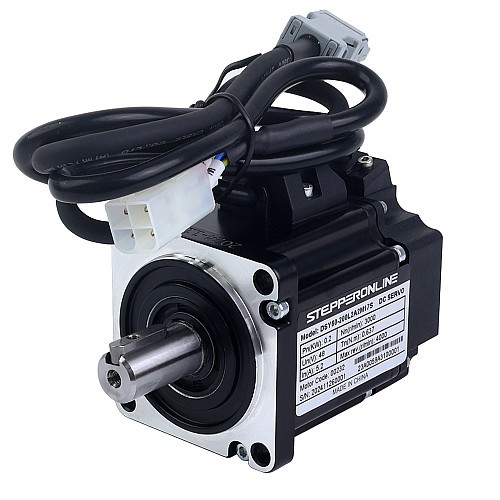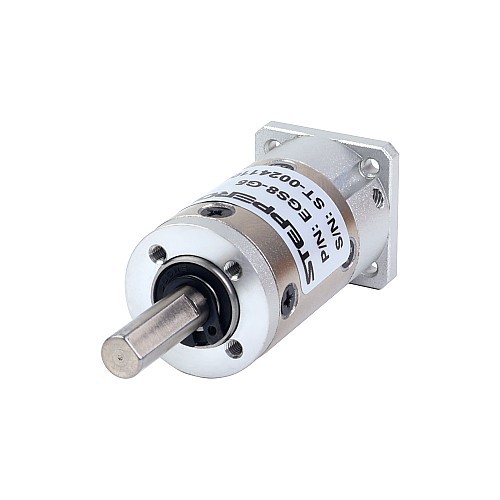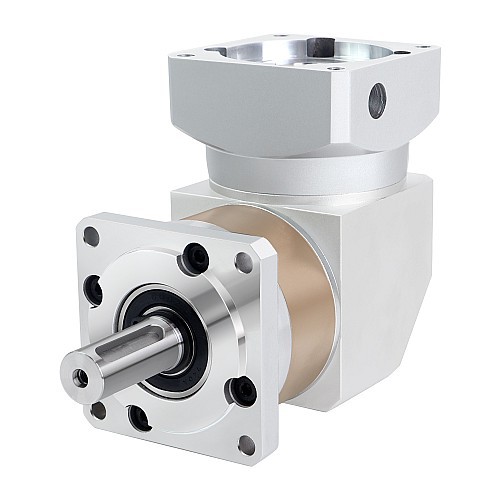-
How to Solve the Problem That the Servo Motor Cannot Keep Up With the Expected Speed?
01/14/2025 at 05:31 • 0 comments1. Possible Causes
1.1. Mechanical problems: If the servo motor cannot keep up with the expected speed, it may be due to problems in the mechanical system. For example, mechanical parts are damaged, the transmission device fails, or the machine is overloaded.
1.2. Electrical problems: Another possible reason why the servo motor cannot keep up with the expected speed is electrical problems. If the power supply voltage of the motor is too low or the AC power supply is unstable, the output voltage of the servo motor will also be unstable, resulting in the speed not keeping up with expectations.
![]()
1.3. Parameter adjustment problems: Another common problem is incorrect parameter settings. If the parameters of the servo motor are not set correctly, it may cause the motor to fail to reach the expected speed.
2. Solutions
2.1. Check the mechanical system: If there is a problem in the mechanical system, check and repair the damage to the mechanical parts, clean and lubricate the machine, and ensure the normal operation of the transmission. If these problems cannot be solved by yourself, you can consider seeking professional mechanical repair services.
2.2. Solve electrical problems: If the servo motor cannot keep up with the expected speed due to electrical problems, you should ensure that the power supply voltage of the servo motor meets the equipment requirements, check the wiring of all electrical components and clean the contaminated contacts. If necessary, you can use a device such as a voltage stabilizer or UPS to provide power stability.
2.3. Adjust parameter settings: The last solution is to check and adjust the parameter settings of the servo motor. Make sure all parameters meet the machine requirements and use the correct accessories. You can also use professional software for parameter optimization.
3. Conclusion
By understanding the reasons and solutions for the servo motor not keeping up with the expected speed, you can solve the problem yourself or get a better solution. If you can't solve it, you can consider seeking professional mechanical repair services.
-
Can I Set Torque Stop While the Servo Motor Is Running?
01/14/2025 at 05:30 • 0 commentsYes, the torque stop function can be achieved by adjusting the torque setting in the closed loop when the servo motor is running.
1. Working principle of servo motor
A servo motor is a motor that converts electrical energy into mechanical motion. Unlike ordinary motors, it monitors the motion state in real time through feedback devices such as encoders, and the control circuit controls the motor more accurately.
The main working principle of the servo motor is: the control circuit reads the feedback signal, compares it with the target position, calculates the error, and sends the control signal to the motor so that it can move according to the preset motion trajectory.
![]()
2. The principle of setting the torque stop function
During the operation of the servo motor, the torque stop function needs to be set in many application scenarios to ensure that the device can stop moving more accurately.
The principle of achieving torque stop is: in most cases, there is a torque limiter inside the servo controller. By adjusting the torque setting in the closed loop, the purpose of stopping the motor can be achieved after reaching a certain torque.
However, it should be noted that if the set torque is too small, it may affect the normal operation of the device, so it needs to be flexibly set according to the actual application situation.
3. Advantages and application scenarios of servo motors
Servo motors have the following advantages:
1. High precision: Due to the use of closed-loop control, the servo motor can monitor its own motion state in real time and accurately control it, ensuring higher accuracy and precision.
2. Fast response speed: Due to the support of a large number of special electronic technology equipment inside the servo motor, it can achieve fast response in an instant, thereby improving work efficiency.
3. Adaptable to a variety of application scenarios: Servo motors are widely used and can be applied to equipment in various industries, such as CNC machine tools, punching machines, robots, etc.
In summary, setting the torque stop function can effectively ensure the stability and safety of the equipment, and is widely used and easy to implement in the operation of servo motors.
-
Detailed Introduction of the Input Shaft and Output Shaft of the Planetary Gearbox
12/05/2024 at 05:03 • 0 commentsThe input shaft of the planetary gearbox is the shaft where power is input, and the output shaft is the shaft where power is output. They achieve the functions of deceleration, speed increase or change of transmission direction through the interaction of components such as the planetary gearbox carrier, sun gear and planetary gear.
In the field of mechanical transmission, the planetary gearbox system has attracted much attention for its unique transmission method and high efficiency. Among them, the input shaft and output shaft are two indispensable key parts of the planetary gearbox system. This article will deeply analyze the input shaft and output shaft of the planetary gearbox to show you their working principles and applications.
![]()
1. Basic structure of planetary gearbox system
Before understanding the input shaft and output shaft, let's briefly review the basic structure of the planetary gearbox system. The planetary gearbox system is mainly composed of sun gear, planetary gear, planetary gearbox carrier and inner and outer gear rings. Among them, the sun gear is located in the center, the planetary gearbox revolves around the sun gear and rotates on its own, and the planetary gearbox carrier supports the planetary gearbox and enables it to revolve. The inner and outer gear rings mesh with the planetary gearbox and sun gear respectively to achieve power transmission.
2. Function and characteristics of input shaft
The input shaft is the shaft through which power is transmitted in the planetary gearbox system. It is usually connected to the driving device (such as motor, engine, etc.) to transmit power to the planetary gearbox system. In the planetary gearbox system, the input shaft transmits power to the planetary gearbox and the inner and outer ring gears through the sun gear, thereby driving the entire system to operate.
The characteristics of the input shaft mainly include:
2.1. Bearing large torque: Since the input shaft is directly connected to the driving device, it needs to bear large torque. Therefore, the input shaft is usually made of high-strength materials to ensure that it can withstand large loads.
2.2. High-precision processing: In order to ensure transmission efficiency and transmission accuracy, the input shaft needs to be processed with high precision. This includes the processing accuracy requirements of the shaft diameter, keyway, thread and other parts.
2.3. Lubrication and sealing: The input shaft needs good lubrication and sealing during operation to reduce wear and leakage. Therefore, lubrication and sealing measures need to be considered during the design and manufacturing process.
![]()
3. Function and characteristics of the output shaft
The output shaft is the shaft that transmits power in the planetary gearbox system. It converts the power of the input shaft into a specific speed and torque output through the interaction of components such as the planetary gearbox carrier, sun gear, and inner and outer ring gears. The output shaft is usually connected to the driven equipment to drive it to operate.
The characteristics of the output shaft mainly include:
3.1. Stable output performance: The output shaft needs to have stable output performance to ensure that the driven equipment can operate smoothly. This requires the planetary gearbox system to have high transmission accuracy and stability.
3.2. Strong adaptability: The output shaft needs to adapt to the output requirements of different speeds and torques. Therefore, the planetary gearbox system needs to have a variety of transmission ratios to choose from to meet the needs of different application scenarios.
3.3. Compact structure: The output shaft usually needs to be closely integrated with the planetary gearbox system, so its structure needs to be compact and lightweight for easy installation and commissioning.
My Pages
Projects I Like & Follow
Share this profile
ShareBits
Become a Hackaday.io Member
Create an account to leave a comment. Already have an account? Log In.




 Lutetium
Lutetium Frederic
Frederic niftylight
niftylight Hari Wiguna
Hari Wiguna Mike Szczys
Mike Szczys Makarand Kapoor
Makarand Kapoor Philip Zucker
Philip Zucker David Prutchi
David Prutchi Rodolfo
Rodolfo Marius Heier
Marius Heier jon.knutton
jon.knutton Brian Brocken
Brian Brocken Celestial Robotics
Celestial Robotics Greg Zumwalt
Greg Zumwalt engineerkid1
engineerkid1